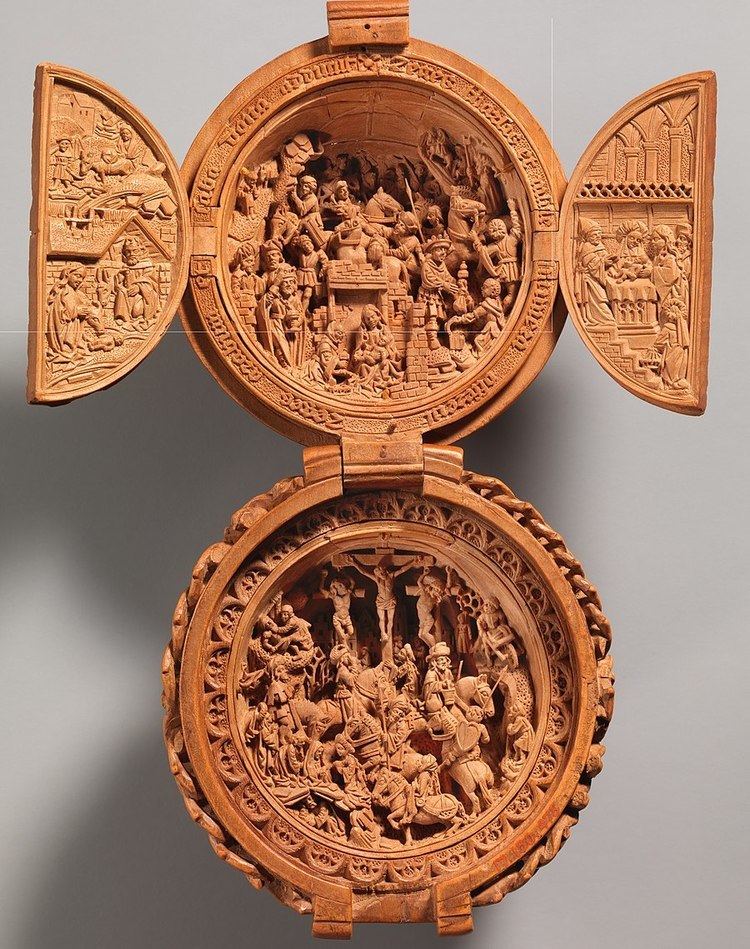 | ||
Prayer Bead with the Adoration of the Magi and the Crucifixion (MS 17.190.475) is a small south Netherlandish Gothic boxwood miniature, carved in fine-grained boxwood, and dated to c 1500–10. It is now collected in The Cloisters, New York. Originally the bead would have been part of a complete rosary set, and its size suggests its use as an Ave bead, where the supplicant would recite the "Hail Mary".
Objects of this type were in great demand in the early sixteenth century. Apart from use in private veneration, they could be worn as necklaces or hung from belts as fashionable accessories. The exceptional craftsmanship of this example indicates that it was intended for a member of the high nobility.
The Cloisters bead consists of two surviving capsules, each containing of a series of minutely detailed carvings on both sides. Latin inscriptions, some in Gothic script, frame the work. The upper capsule has two wings, which when opened form a triptych. These three panels show the journey to Nazareth and the nativity on the left wing, with the Adoration of the Magi, complete with horses and camels, and the Presentation and the Offering of Doves (Leviticus 14:22) on the right.
Adam and Eve and the tree of knowledge are detailed on the outside of the wings. The use of boxwood, with its regular dense grain, allowed craftsmen to create highly detailed miniature carvings, usually with the aid of a steady hand and a magnifying glass.
The lower half is dominated by the Crucifixion of Jesus, while also showing the Agony in the Garden and Saint Peter severing the ear of Malchus with his sword. Other carvings include the crown of thorns and Gothic arches.
Inscriptions on the exterior are taken from the Book of Lamentations 3:41 and 1:12 and read "LEVEMVS CORDA NOSTRA CVM MANIBVS AD DNM IN CE and ATTENDITE (ET) VIDETE SI EST DOLOR SICVT DOLOR MEV" Those on the upper half of the interior are from Psalm 71 and use Gothic lettering, reading "REGES THARSIS ET INSILE" and "VNERA OFFERENT. REGES ARABVM ET SABA DONA ADDVCENT"
J. P. Morgan donated the bead to the Metropolitan Museum of Art in 1917.
